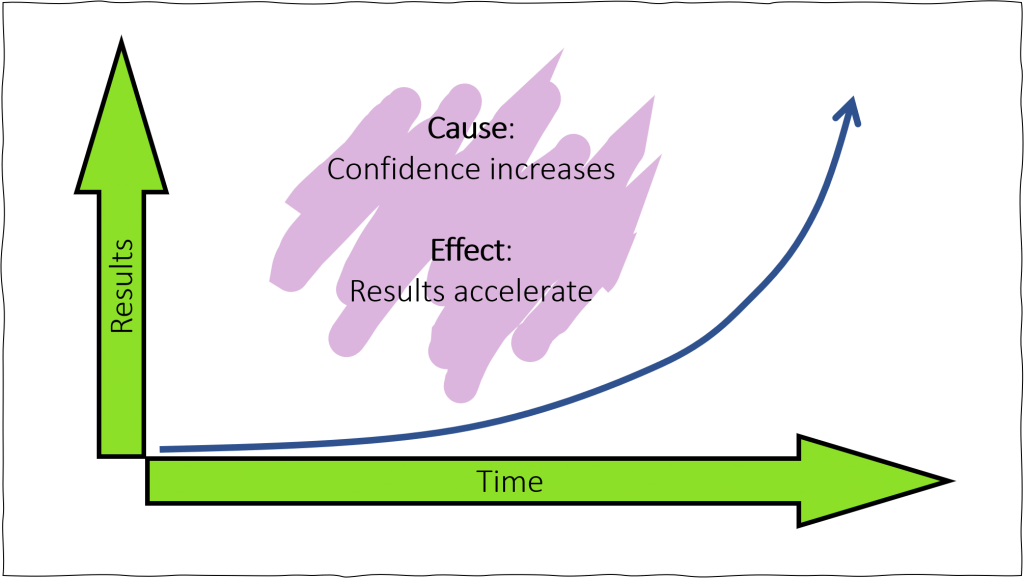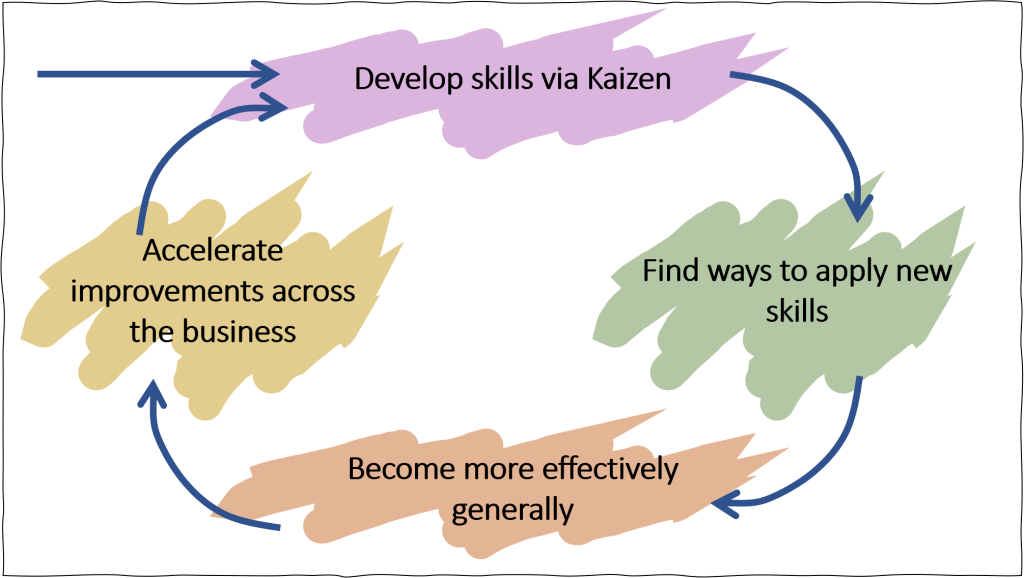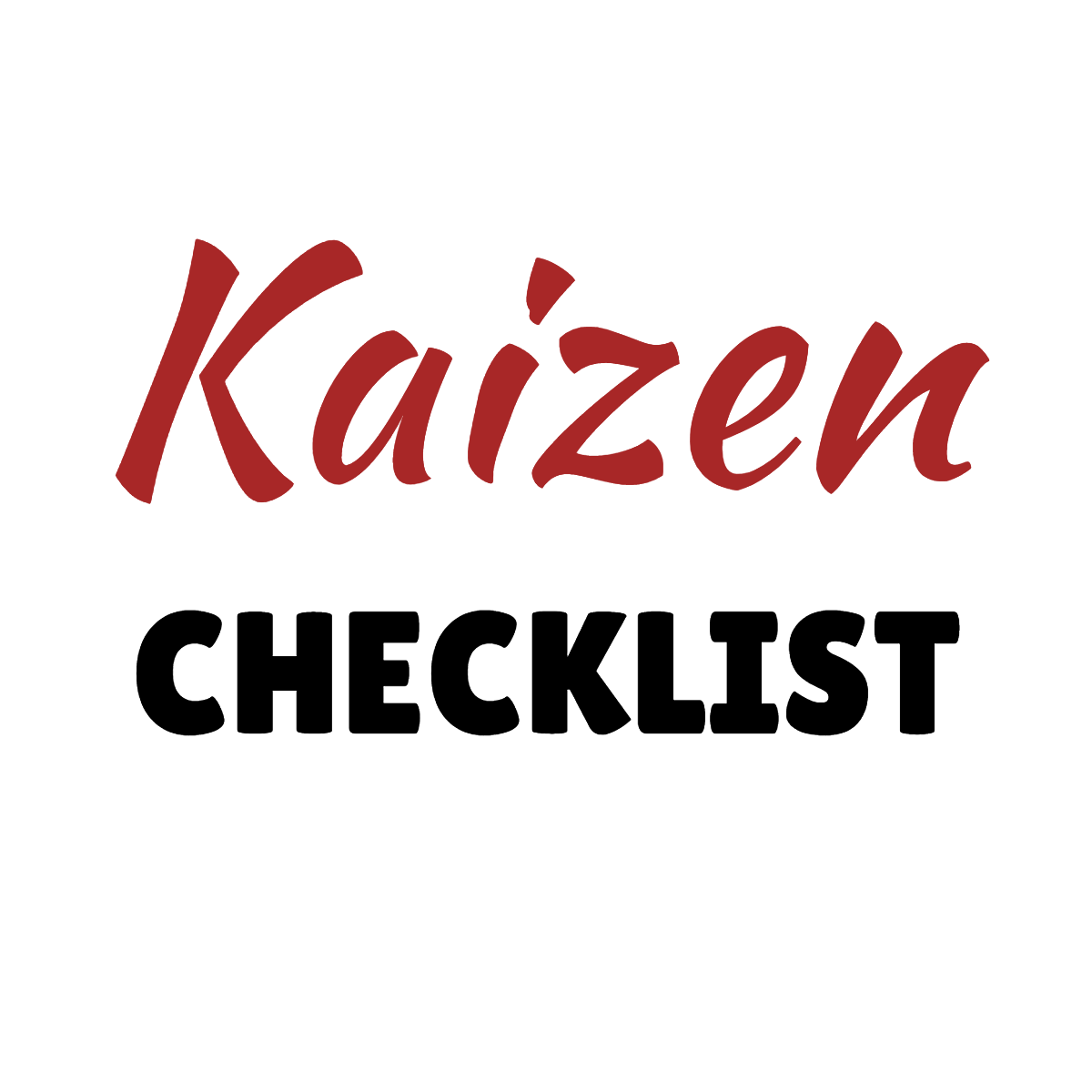Kaizen is one of those methods that can really deliver results. It is also something that a good number of managers will hide away from.
Why is this?
For those of you that are new to Kaizen, it is much more than a Japanese word for ‘continuous improvement’. It is a psychological tool to help teams get the hang of implementing changes by starting with the very smallest improvements possible. This works by avoiding the ‘fight or flight’ response when undertaking change. How many times have you had to look at improving your business whilst already having a crushing workload?
What happens in these situations? Procrastination!
However, I have personally seen staff transformed by this approach, along with the businesses they work for. So why would managers hide away from this approach?

I’m sure that there are as many answers as there are managers but let me try my best to summarise the main issues and how they can be overcome.
I don’t have time!
The idea that a Kaizen programme / habit will take a lot of time is a common one, ironically one that goes against the intentions of Kaizen! If you feel this way then the logical step is to design a programme that doesn’t take much time to administer and look after. Generating / capturing ideas doesn’t have to take long. Nudging improvements along doesn’t have to take long.
What can take a long time is getting bogged down with too much detail if you get a deluge of changes put forward. Designing your approach before you begin needn’t take much time either but will make a big difference to both your time and the results you get.
Kaizen does not need to take much time to deploy and manage.
No one has all of the answers
A common complaint I hear and see is managers feeling like they have to know all of the answers to all of the questions and problems put forward during Kaizen sessions. I have witnessed over the years managers talking about how they are stressed out with their current workloads and that they can’t imagine their teams bringing yet more problems to them.
Kaizen suggestions shouldn’t be seen as ‘yet more problems’ and rather as opportunities for improvement. Not knowing all of the answers is fine (it is the for the rest of the human race!). The process of Kaizen means that people need to go away and find out the answers; it should not all be down to you!
How you handle these conversations and situations is down to you. You get to decide how you want to handle the incoming improvement ideas. You get to decide how the work is supported or delegated.
So, don’t worry about not knowing everything (if that is holding you back) because you get to design your Kaizen approach.
Don’t know where to start?
What is Kaizen all about?
What are all the tools that can be used?
Kaizen can seem confusing when you first come across it as it can buried in a heap with a range of other Lean tools. We know that Kaizen is a tool to help us overcome our own psychologies to implement change by ‘not being freaked out’ by the size of the changes taking place (or the effort required).
So, Kaizen is a strategy and a simple one at that. We make it confusing when we don’t think through how we want to deploy it. Organisations that jump in without thinking through the management of change are usually the ones that jump out the other side with tales of woe!
The simplest place to start with Kaizen is to capture the ‘low hanging fruit’. Take a walk around your business and see what could be improved. I wouldn’t even consider anything more structured if you are starting out (and this approach can be used on a regular basis forever more!).
So, ignore the toolkits and the noise for the time being. Find a small improvement that is right under your nose and start with that one thing. Expand from there in a way that you are comfortable with.
Your team aren’t capable of helping you
This is a realistic challenge for many managers when you think that your team aren’t capable of helping you make the changes. The last thing you probably want is another to do list of actions (and everyone watching).
Getting your team members onboard with change can help with all of your objectives too. If you can find a way to unleash a little more of your team’s potential then you have the keys to higher performance across the board. The good news is that your team probably have more capability that you think, if you give them the right structure and opportunity.
Starting small, providing clear guidance on what a good improvement looks like and some basic tools is enough to help out most team members (and seasoned improvement staff!). With just this alone you can make a big difference to the rate of improvement you experience.
In many cases it is the conversation that is the key. Many improvements don’t need awfully complex analysis, they just need to be floated as an idea. The conversation is what gets insights shared and perspectives understood. From here flows improvement ideas and opportunities in abundance. Even if some of the ideas are wacky or ‘innovation’ ideas there will be enough practical and immediate opportunities that make the whole thing worthwhile.

Investing my time in small changes won’t deliver the big results I need
When a business is struggling, small changes may feel like the last thing you want. Most businesses want big changes now! Don’t underestimate the power of small changes…
Are you familiar with the Pareto rule, also known as the 80/20 rule? In short it states that there is an imbalance between cause and effect. Some causes produce disproportionately large effects whilst the majority of causes provide only minor benefit. The shorthand is the 20% of the causes / inputs produce 80% of the effects / outputs.
The right Kaizen idea can be one of those 20% of causes that can lead to 80% of the effects. Many of my clients have experienced those small changes that transform performance. I am confident that you can find them too.
A great example of this was flipping a setting in a client’s ERP system that totally transformed their ability to manage their capacity and improve delivery performance (with less overtime and ultimately better profit). The change only took an hour to undertake and test. Of course knowledge is required for this kind of change but that is what the conversation element is all about.
Don’t be concerned about small changes taking an age to get you to where you want to be. The worst case is that you improve slowly. The reality for most of us is that the people taking part learn and improve. The size of a small task grows over time in the minds of the participants. This growing momentum can take you to places that you could never imagine!
So why not embrace Kaizen?
If you want to play the longer game, where your team are engaged with the process of change and improvement, where performance and great results is the norm, then why not?
Kaizen is an unbelievable tool for growth – for you, for your team members and for the wider business.
Tiny steps can be powerful and satisfying at the same time. If you want some ideas on how to structure your Kaizen approach then I urge you to download a copy of the Kaizen Checklist today and work through the considerations I present. This is the same information that I share with my clients when I run workshops with them when they are determining their best course of action for deploying Kaizen.
I hope that this article has shared with you some ideas that have changed your opinion of Kaizen. If you are serious about change and getting results then it cannot be ignored as a tool and a philosophy.
Good luck with your Kaizen journey,
Giles
0,The Kaizen Checklist